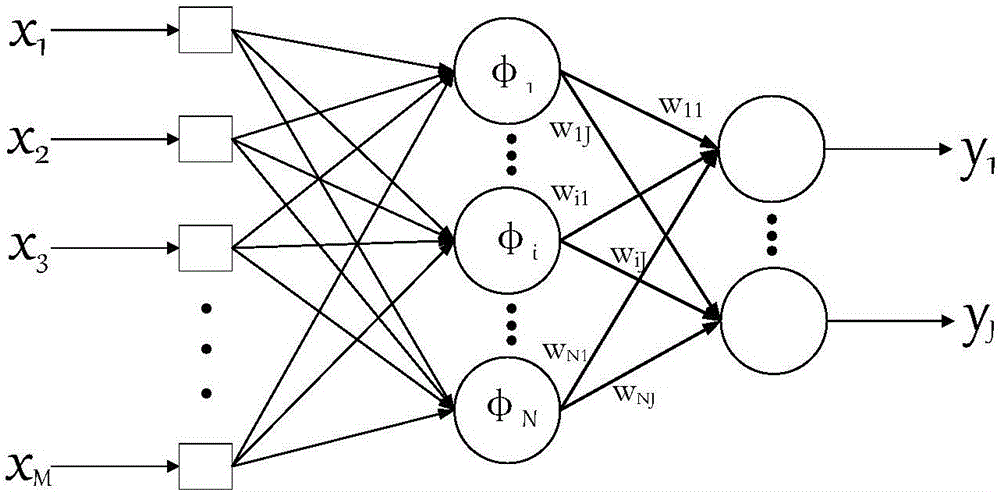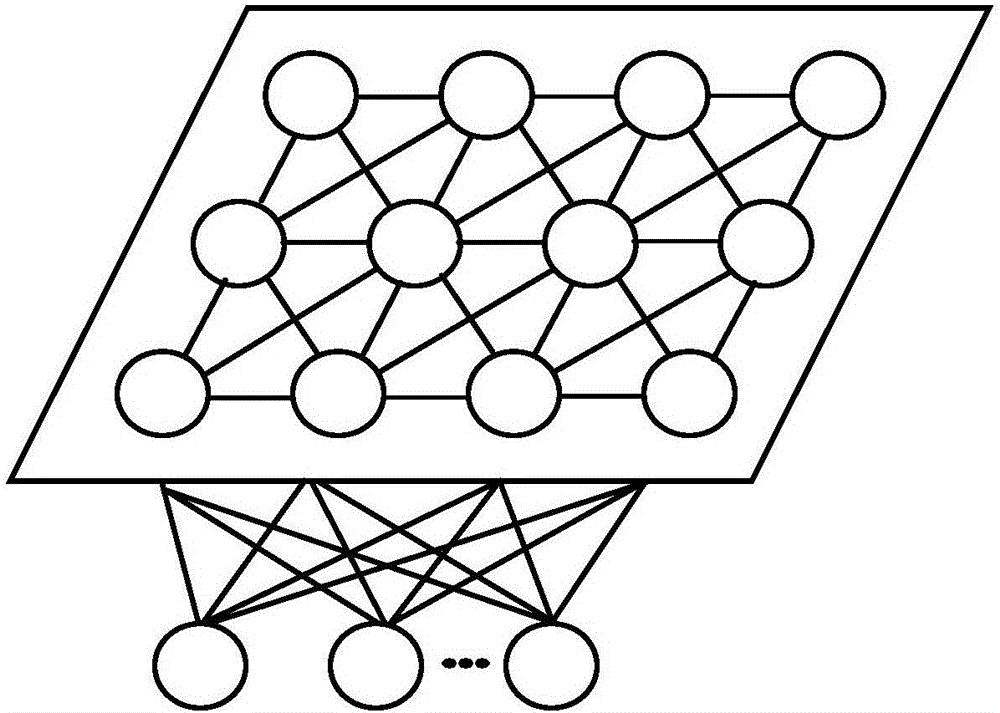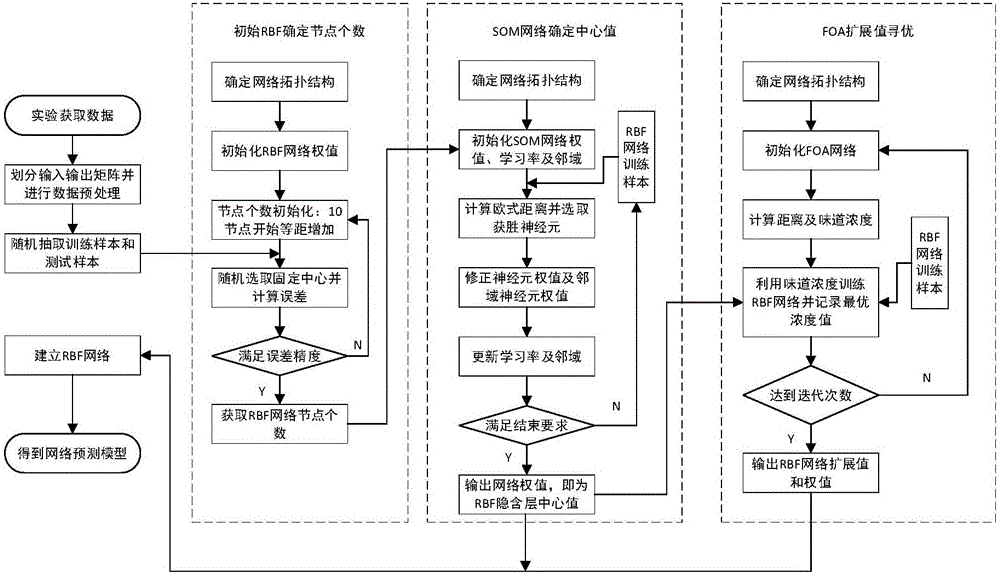Pressure sensor temperature compensating method based on FOA-optimized SOM-RBF
A technology of pressure sensor and temperature compensation, applied in fluid pressure measurement by changing ohmic resistance, fluid pressure measurement, neural learning method, etc., can solve problems such as complex network and many random parameters, and achieve fast convergence speed and good real-time performance , to avoid the effect of data mismatch
- Summary
- Abstract
- Description
- Claims
- Application Information
AI Technical Summary
Problems solved by technology
Method used
Image
Examples
Embodiment
[0049] Such as Figures 1 to 3 shown. The invention discloses a pressure sensor temperature compensation method based on an FOA-optimized SOM-RBF, which can be realized through the following steps.
[0050] (1) Establish RBF network to determine the number of hidden layer nodes:
[0051] The structure of the RBF network is attached figure 1 Shown:
[0052] If the input vector X m =[x 1 ,x 2 ,...,x m ] T is a column vector of m, and the hidden layer has n hidden nodes, then the output of the i-th hidden node is is the center of the basis function. The output layer consists of several linear units, and each linear unit is connected to all hidden nodes, ωij is the weight from the i-th hidden layer to the j-th output layer, and the final output of the network is the linear weighted sum of hidden node outputs. Let the actual output be Y k =[y k1 ,y k2 ,...,y km ] T , then when the training sample is X k When , the output of the Jth output neuron of the network is: ...
PUM
 Login to View More
Login to View More Abstract
Description
Claims
Application Information
 Login to View More
Login to View More - R&D
- Intellectual Property
- Life Sciences
- Materials
- Tech Scout
- Unparalleled Data Quality
- Higher Quality Content
- 60% Fewer Hallucinations
Browse by: Latest US Patents, China's latest patents, Technical Efficacy Thesaurus, Application Domain, Technology Topic, Popular Technical Reports.
© 2025 PatSnap. All rights reserved.Legal|Privacy policy|Modern Slavery Act Transparency Statement|Sitemap|About US| Contact US: help@patsnap.com



